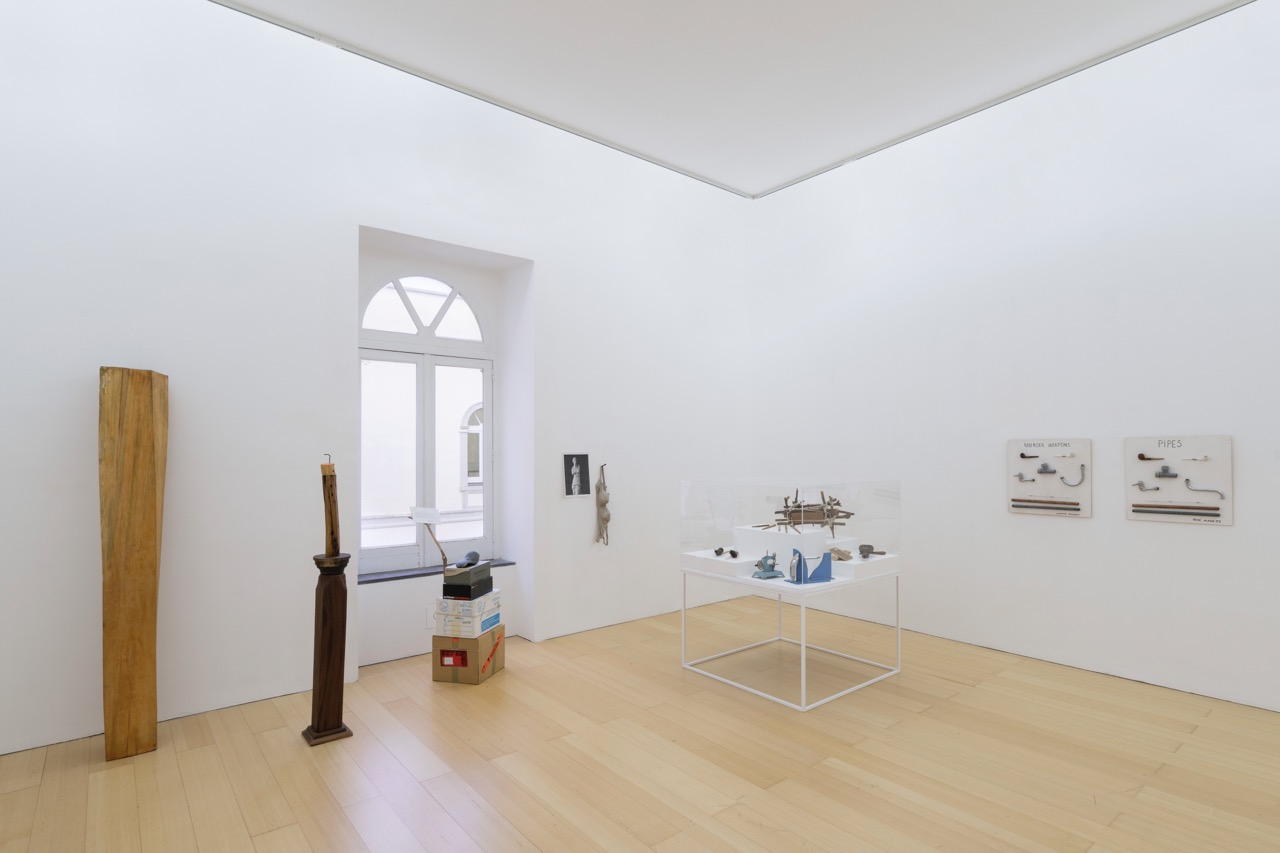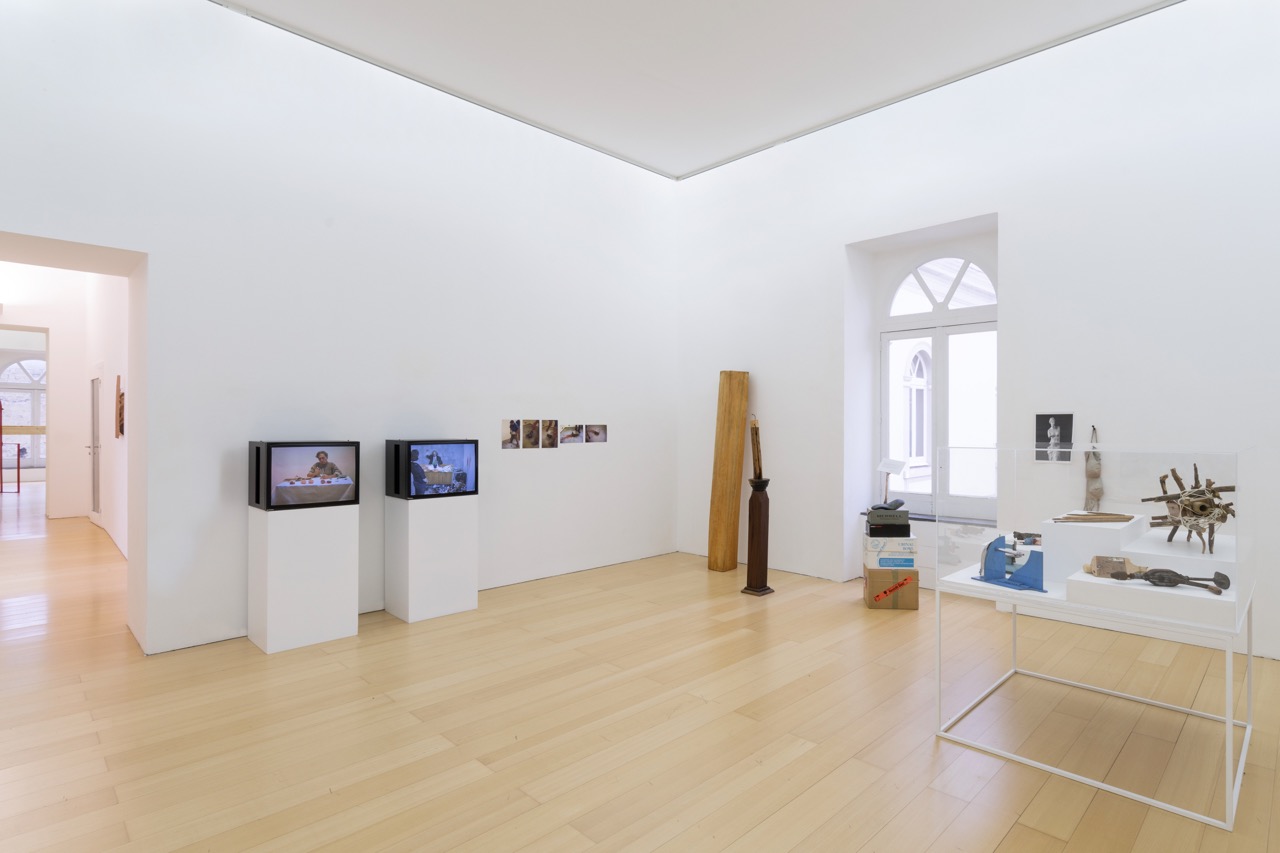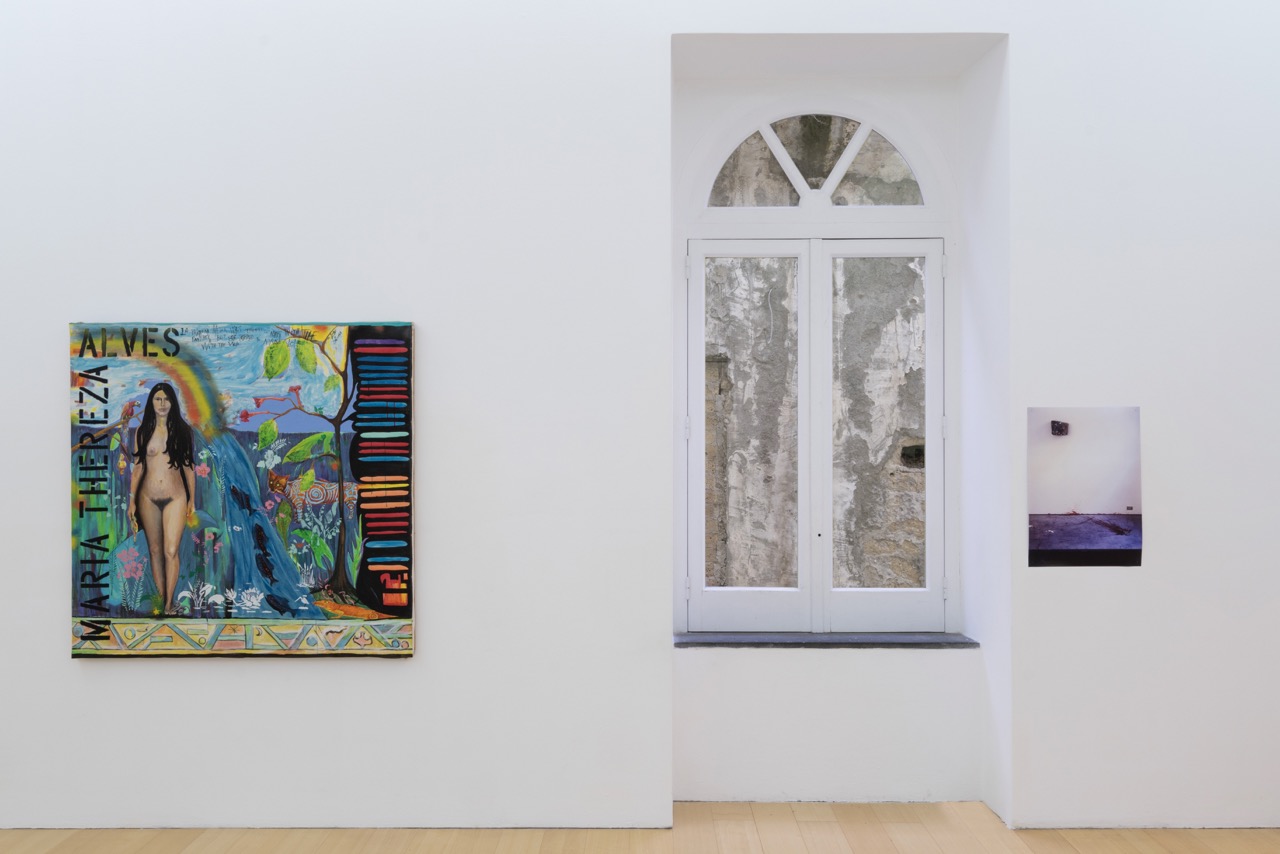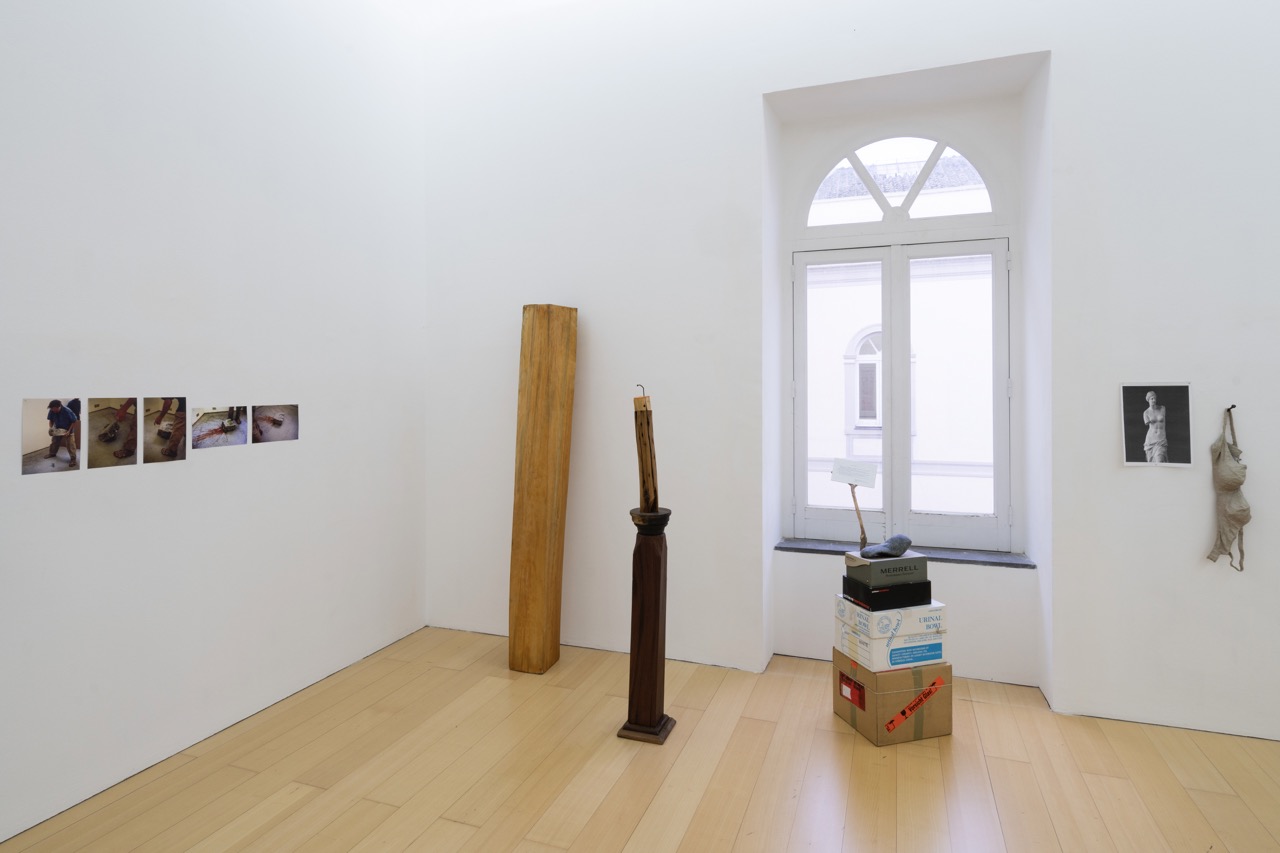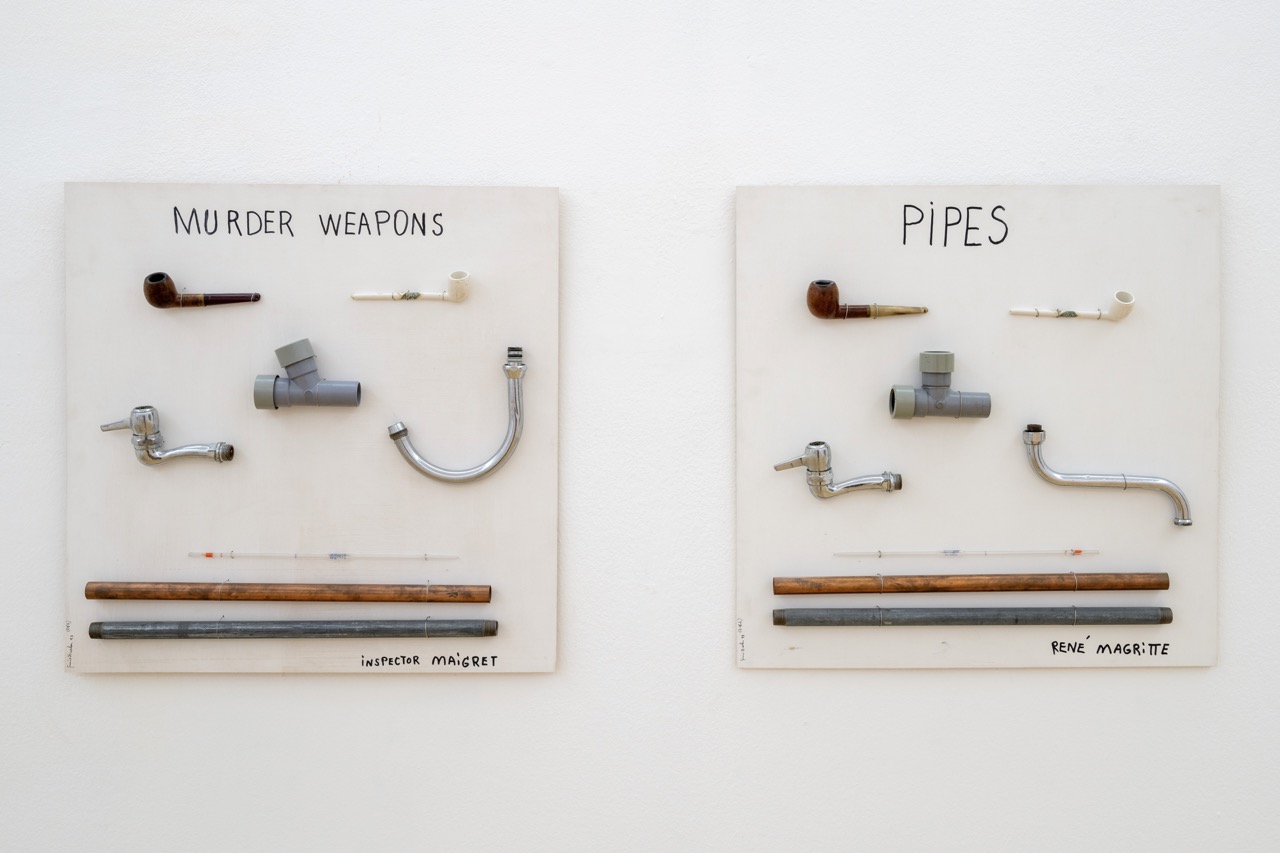Durham’s exploration of the semiotics of architecture ran in parallel to a critique of established European art historical media and genres. Observing codified forms of European sculpture, he began to attack metal with rock as a critique of the violent use of metal sculpting tools on blocks of marble or other stone. Through a celebrated action performed at FRAC Champagne-Ardenne, Rheims in 1996 and documented in the video Stoning the refrigerator, an anonymous refrigerator is martyred and becomes the sculpture St. Frigo. In 1997 Durham was invited by the cultural association Viafarini in Milan to conduct a workshop entitled Invitation to a pointless investigation, which he described as investigating ‘the anomalous situation of art’. As a performance in this context, Durham destroyed a can of tomato sauce with a rock, creating a red splatter. These events launched his exploration of the use of stone to transform other materials, as seen notably in the durational performance Smashing of 2004, and most famously through the destruction of a series of vehicles with large rocks, initiated at Sydney Biennial in the same year.
Durham understood art as a form of investigation. He would challenge art with anti-art in order to question its circumstantial and consensual definitions and allude to certain works and figures in European and North American art history (such as Constantin Brancusi, Marcel Duchamp, Luciano Fabro and Réné Magritte in works in this room). His often humorous and affectionate approach allowed him to sidestep direct criticism or moralizing. ‘I want all art to be political’ he would write in one of his essays, referring to art’s potential to bring together different positions and call into question existing beliefs.
Jimmie Durham: humanity is not a completed project, installation view of the exhibition at the Madre museum, 2023. Photo by Amedeo Benestante
